You may know Midori as the Japanese brand behind the traveller’s notebooks, and the well-regarded MD paper. But they also sell fountain pens, including the quirky bullet pen, and this, the MD.
At £40, this model is pushing out of the true ‘affordables’ tier against the Preppies, Prefountes, Ecos and plastic Sports. You can get plenty of killer pens for £10-30. So what’s this one got to justify the extra cash? Let’s find out.

Appearance-wise, Midori have struck a vaguely retro tone. The barrel is a pale cream, with MIDORI MD engraved/printed in silver.
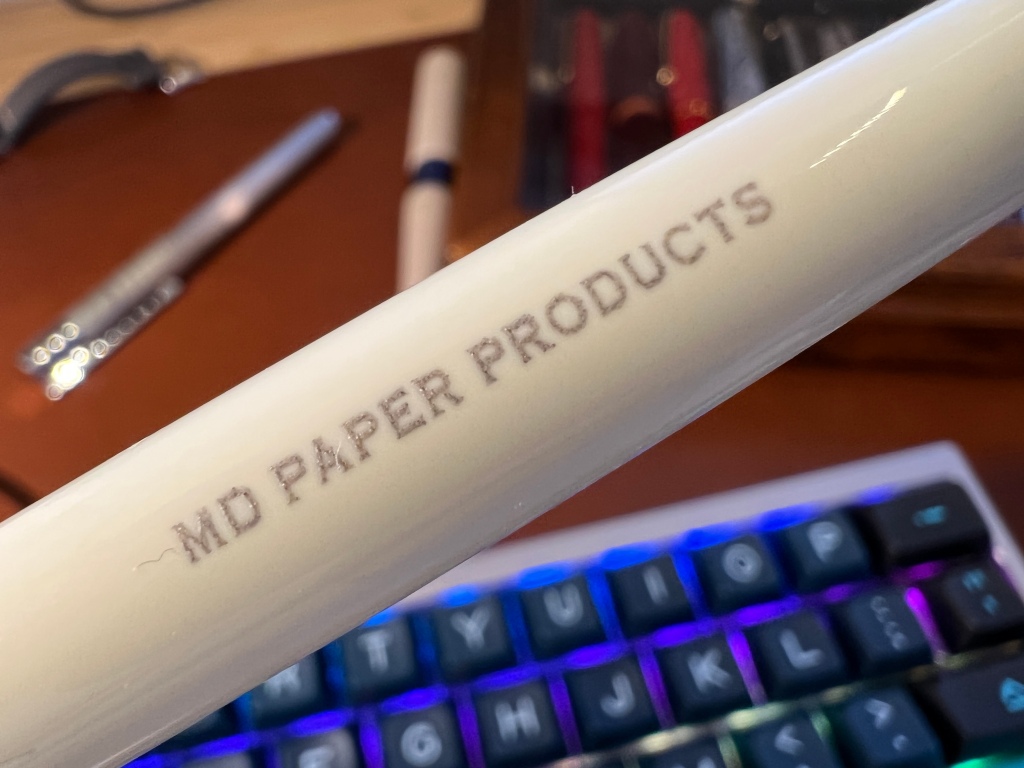
The cap is brushed silver metal like an old Parker, making for a pleasing visual pairing against the barrel, and it clicks into place very solidly.

It has a small inner cap to seal the nib. There’s a strong springy clip that looks like it’ll take plenty of punishment in its stride.

Overall it’s an attractive and well-proportioned design, but it’s worth noting that the MD is a small pen, short, slim and light at 15g all-in.
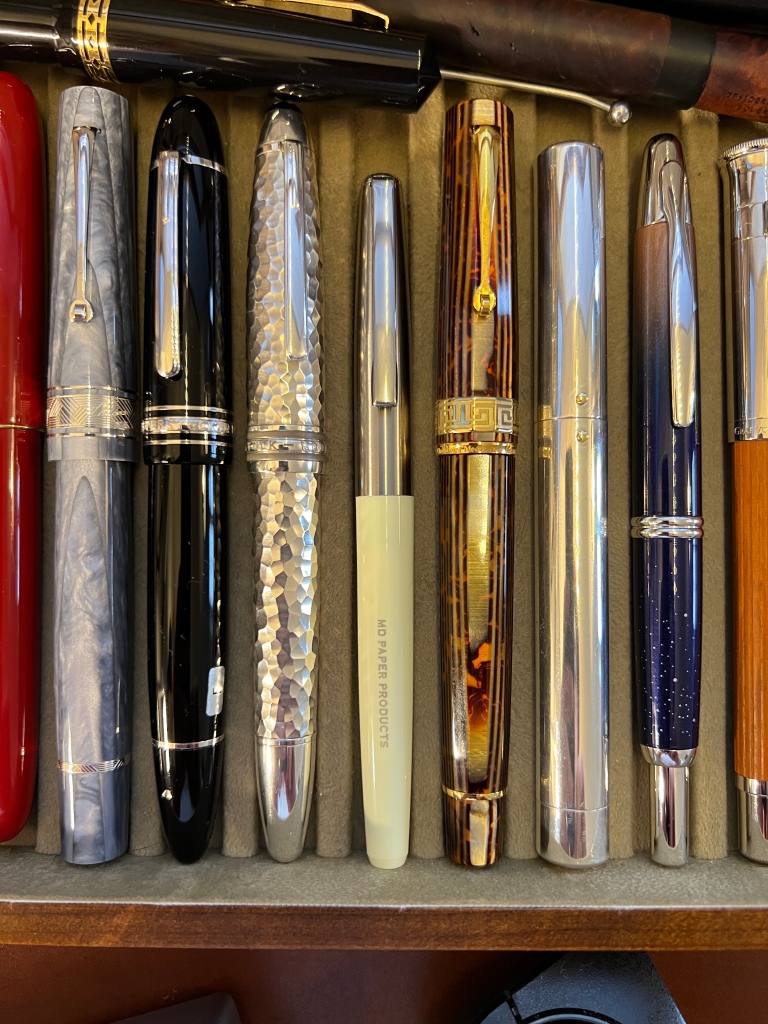
Uncap it and you can see it’s not all vintage. The section is long, made from slightly textured clear plastic, with pronounced grippy ridges (and a quite visible casting line).
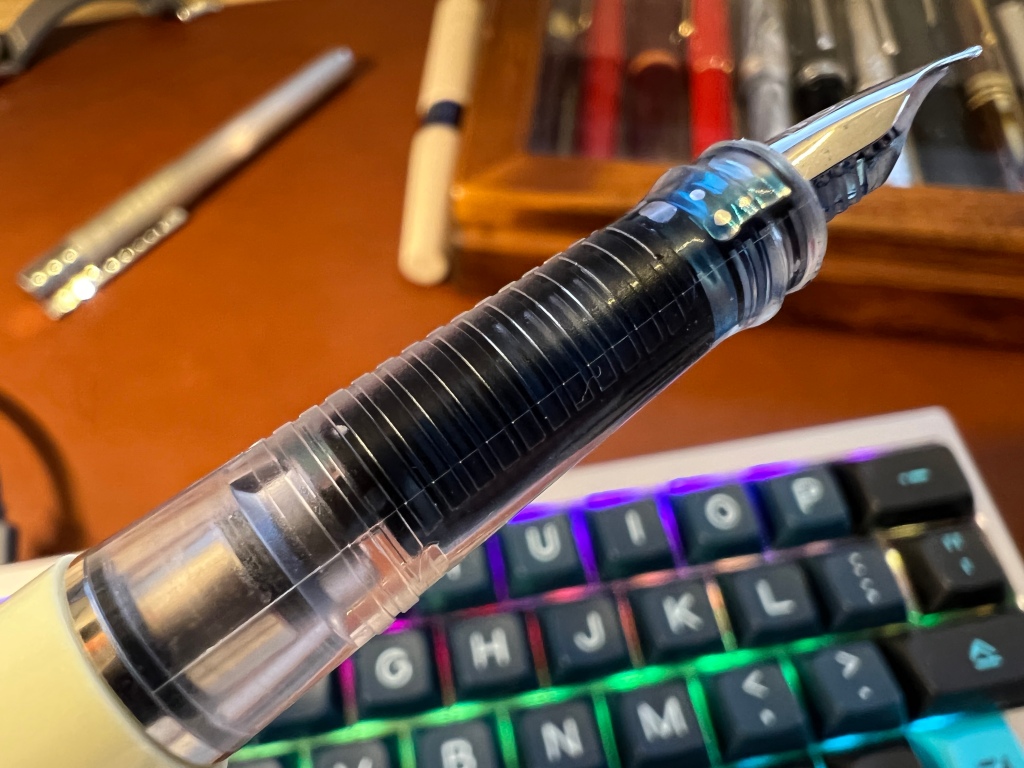
You can see everything from the converter nipple down to the nib. And I mean everything: the party piece of this pen is the clear feed, so your choice of ink will be very visible (in this case the rather attractive Woolacombe Bay Cult Pens exclusive from Robert Oster).

It’s too early days to see if there will be any staining of the feed or section in long term use, but I’d certainly avoid shimmer or other badly behaved inks if that kind of stuff bothers you. I’m sticking to relatively unsaturated dye-based blues for the moment.
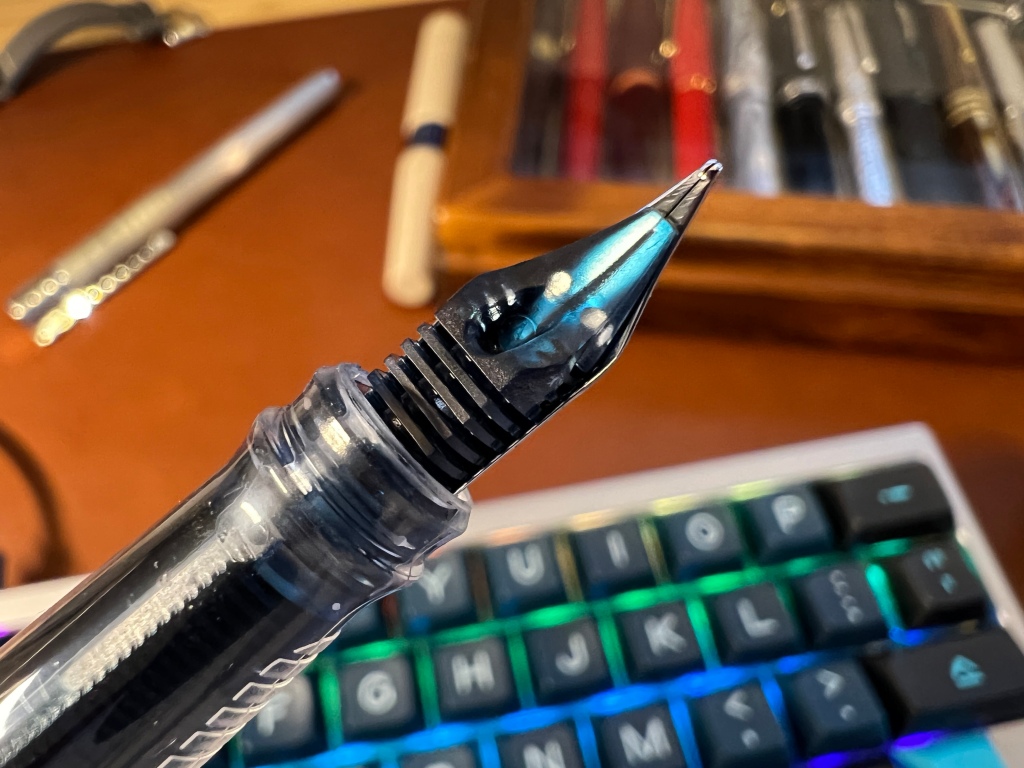
The section is quite slim, and the barrel step sharp, but I didn’t find that compromised comfort, thanks to the section’s length and texture. And if you find the MD too short or light, the metal cap posts extremely deeply, making a seamless extension to the barrel. It’s one of the few pens I prefer to write with posted.

The Midori MD arrives in a rather cheap plastic package with some info paper inside, and a single international standard cartridge. At £40, I would hope for an included converter — the barrel has space for one — but none is supplied, which seems to be a bit of a cost-saving trend across the industry. Incidentally, don’t even think of eyedroppering this pen… the back of the barrel has vent holes.
I love the nib on this pen. It’s only available in one grade, M, and writes what I’d call an FM line, pleasantly wet and smooth. It’s a bit of a goldilocks nib.

The nib arrived perfect out of the box and needed no flushing or tuning. Its design is very cool: it’s MD branded, has no breather hole, and is on the small size, but it swoops down like a beak, giving a great feeling of precision and control, a little like a Pilot PO nib. Like the PO, it’s a firm writer.
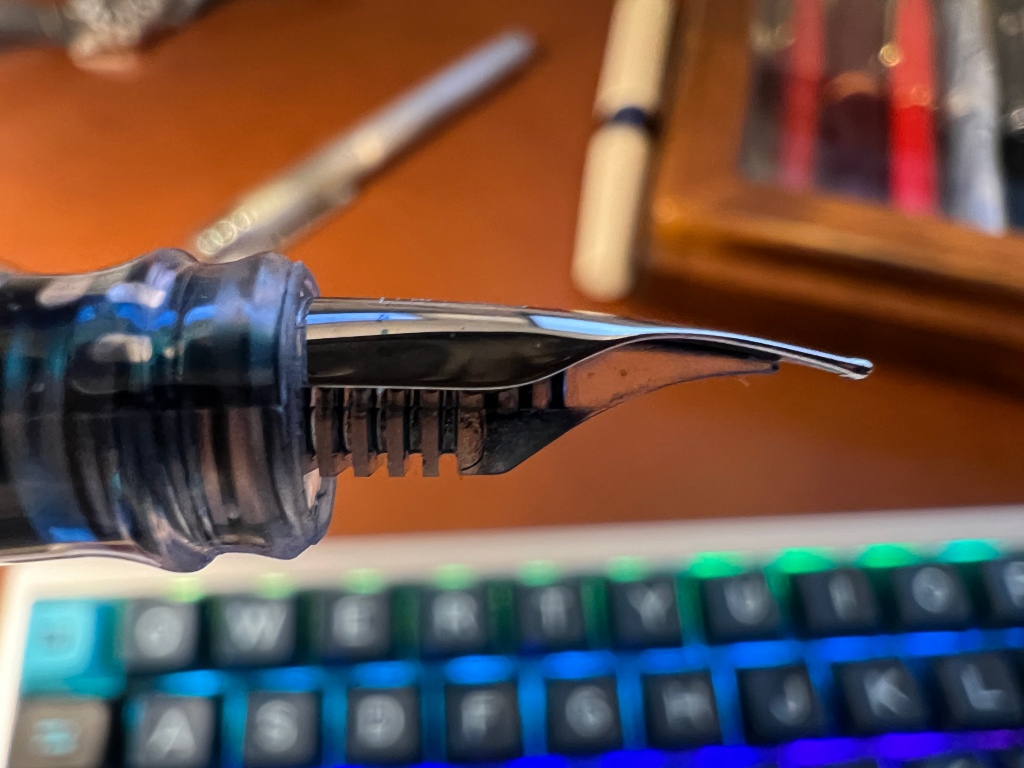
I really enjoy how it writes. And the cap seems to seal well so no problems with drying out if you leave the MD unused for a few days.

This is a cute pen with some interesting design features, particularly the clear feed, ribbed section and beak-like nib. The aesthetics when capped really appeal to me, with that slight vintage tone, and of course it’s a good performer.
But I’m a bit puzzled by the price given how competitive the market is. The MD may be from a Japanese company, but it’s made (presumably at a lower cost) in Slovenia. For £40 or under you can get a colourful Narwhal piston-filler, a fancy-looking Cross Bailey, a solid Faber-Castell Neo Slim or Hexo, a traditional Parker IM, a demonstrator TWSBI Eco or many other options. The MD definitely grabbed my heart, but it would have an easier job grabbing my wallet if it were priced at £30.
Cult Pens sent me this pen to review. You can get yours here.
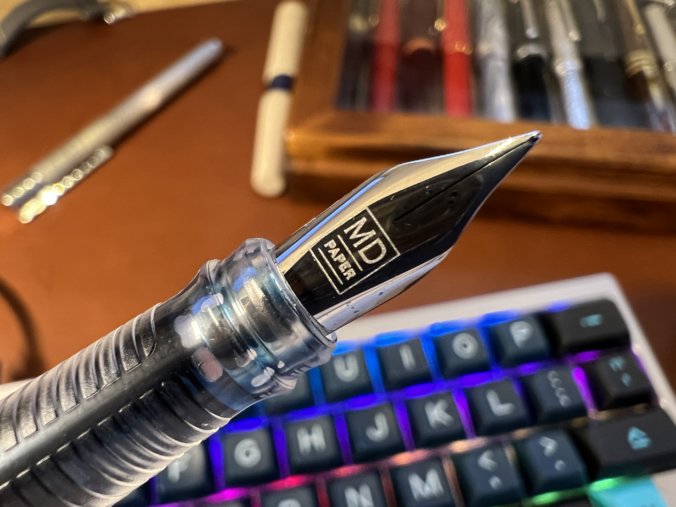
Leave a Reply